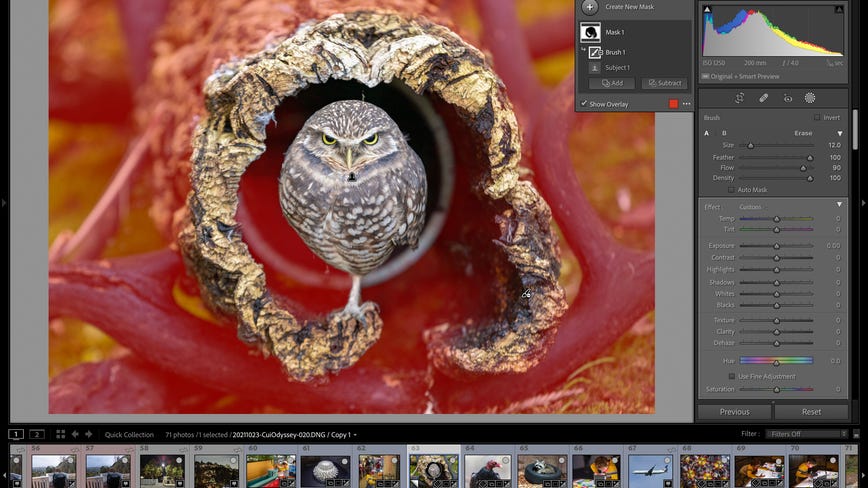Lightroom masking arrives, bringing a major upgrade to photo editing

Lightroom Classic uses AI to automatically select the subject of a photo. In this case, the selection was inverted to edit the background.
Screenshot by Stephen Shankland/CNET
Adobe released an enormously important feature for its Lightroom photo editing software?on Tuesday, a masking tool that uses AI to select elements in a scene for much more sophisticated changes to color, tone and exposure.
The first version of Lightroom permitted changes only to the entire photo, but in 2008 Adobe added an ability to make local adjustments that affected only a portion of the image. Those changes were based on mathematical constructs, though, like a gradient that phased in a brighter exposure from the bottom of the image to the top. The new masking technology generates a region for editing pixel by pixel for much more refined editing.
Masking has been around for decades in Lightroom’s sibling, Photoshop. What makes it different in Lightroom now is that Adobe uses AI — artificial intelligence systems trained on 500,000 real-world photos — to automatically pick out photo regions instead of making you do the manual labor. The new version of Lightroom, released in conjunction with the Adobe Max conference, can automatically select skies and make its best guess at what the subject of a photo is.
Lightroom’s AI picked out the subject of this photo with a detailed mask to make the child brighter without affecting other parts of the image.
Screenshot by Stephen Shankland/CNET
The feature marks the steady progress of AI, in particular an approach called machine learning that’s modeled loosely on human brains. The technology’s utility in recognizing patterns in complex real-world data like speech, photographs and video has chipmakers scrambling to accelerate this increasingly important style of computing.
The masking technology, which Adobe previewed earlier this month, brings significant new complexity to Lightroom. A new masking panel lets you name masks, invert them, add to them or subtract from them and combine them into groups.
Digital photography
- Landscape photography on your phone: Top tips and tricks for better photos
- The DSLR is fading away. Now what?
- The $1,800 Sony Xperia Pro-I phone has a 1-inch camera sensor and dual aperture
Lightroom is designed for editing and cataloging photos, a more advanced alternative to services like Google Photos and Apple Photos. The masking ability makes it a better alternative to another high-end option, Phase One’s Capture One.
Other improvements include:
— A speedup when applying a change to a group of photos and generating the resulting new preview images in Lightroom Classic.
— Optimized support for raw-format photos from the iPhone 13 and iPhone 13 Pro smartphones and the Canon EOS R3 mirrorless camera in Lightroom and Lightroom Classic.
— A customizable metadata panel to pare down or plump up which options like captions, location data and copyright Lightroom displays in Lightroom Classic.
— On MacOS, videos and slideshows should play faster in Lightroom Classic.